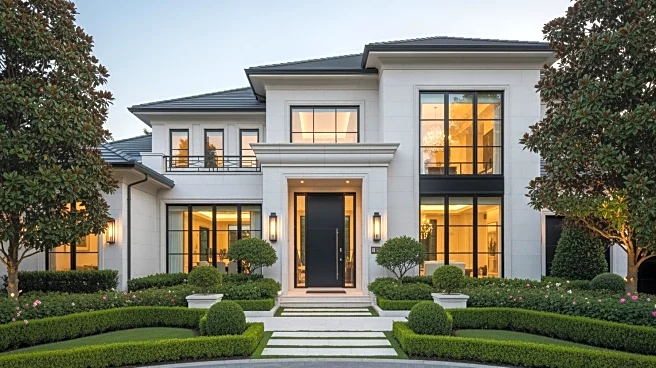What's Happening?
A recent report from Top Ten Real Estate Deals has highlighted several significant trends in the U.S. real estate market. The report notes that fixer-upper homes are gaining popularity, with these properties receiving 52% more page views than comparable
homes, according to Realtor.com. The median list price for fixer-uppers is $200,000, significantly lower than the national median of $436,250. Additionally, Chicago's Avondale neighborhood has been recognized as one of the world's coolest neighborhoods by Time Out, praised for its vibrant cultural scene. The report also mentions the sale of historical properties, such as John F. Kennedy's former Georgetown home, listed at $7.5 million. Furthermore, several towns in Indiana are offering financial incentives to attract new residents, while Brookline, Massachusetts, has been named the top town for quality of life by U.S. News & World Report.
Why It's Important?
These developments reflect broader trends in the U.S. housing market, where affordability and lifestyle quality are becoming increasingly important to buyers. The popularity of fixer-uppers suggests a growing interest in affordable housing options, potentially driven by high property prices in many areas. The recognition of neighborhoods like Avondale highlights the importance of cultural and social amenities in urban living. The sale of historical homes and financial incentives offered by towns indicate a diverse range of strategies being employed to attract buyers and stimulate local economies. These trends could influence future real estate investments and urban planning decisions, impacting economic growth and community development across the country.
What's Next?
As mortgage rates continue to fluctuate, potential homebuyers may remain cautious, impacting sales volumes. However, the demand for affordable housing and culturally rich neighborhoods is likely to persist. Real estate developers and local governments may increasingly focus on creating attractive living environments that balance affordability with quality of life. The ongoing interest in historical properties and unique neighborhoods could also drive investment in preservation and urban revitalization projects. Stakeholders in the real estate market will need to adapt to these evolving preferences to remain competitive.
Beyond the Headlines
The emphasis on quality of life and cultural amenities in real estate decisions underscores a shift towards more holistic approaches to urban living. This trend may encourage cities to invest in public spaces, arts, and community services to enhance their appeal. Additionally, the financial incentives offered by towns like those in Indiana highlight the role of economic policy in shaping demographic trends and regional development. As these dynamics unfold, they could lead to significant changes in how cities and towns across the U.S. are perceived and valued.














